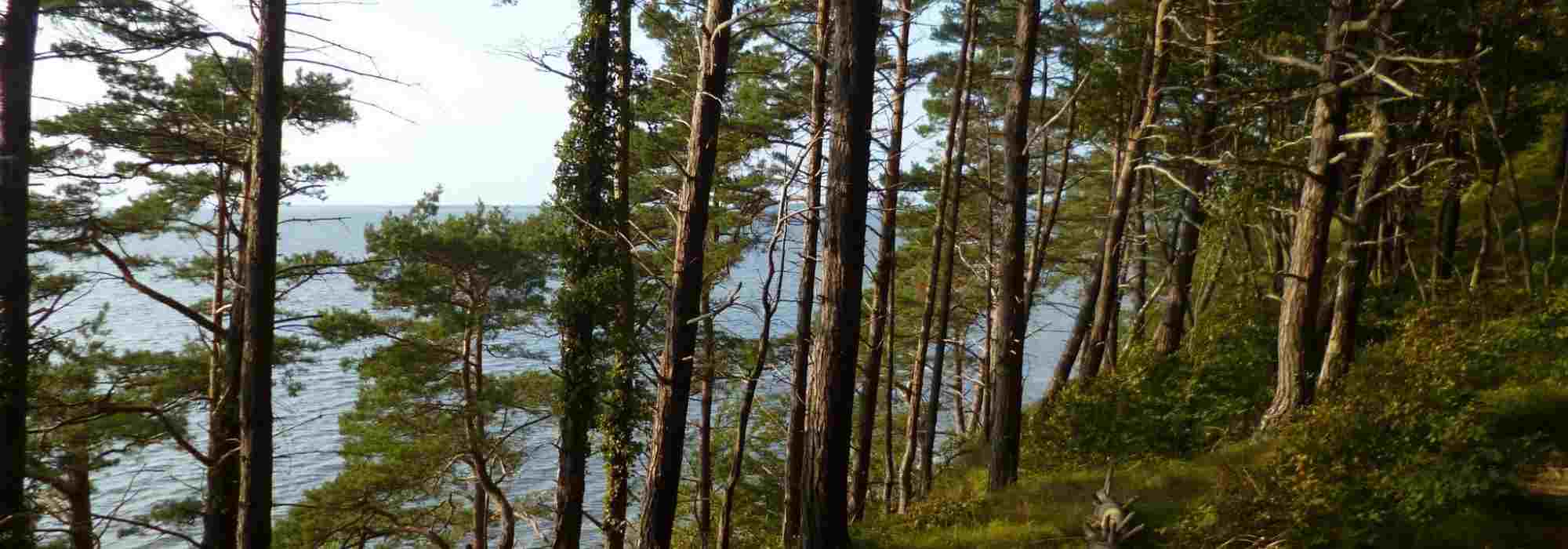
9 wind-resistant conifers
Our selection of conifers suitable for a windy situation
Contents
Inviting conifers into the garden is a bet on a durable and changing decor. The main advantage of conifers is that they remain decorative all year round. Strong and frequent winds along the coasts or in high mountains have had progressive physiological and mechanical effects on conifers, which have allowed them to develop great resistance. Here is our selection of the best wind-resistant and decorative conifers for their shape, texture, and colour.

Conifers form the framework of the green rooms in the famous English garden of Lawrence Johnston, ‘Hidcote Manor’.
To avoid any failure, we advise you to plant appropriately. Feel free to adopt our web application Plantfit.
Maritime pine - Pinus pinaster
Pinus pinaster or maritime pine is found in France in the Landes forest. This elegant tree is perfectly suited to the climate and soil of the Atlantic coast. This large conifer withstands strong winds thanks to its taproot surrounded by numerous running roots. Its trunk is covered with thick reddish-brown bark resembling scales. The light shade of this pine allows it to be paired with hydrangeas.
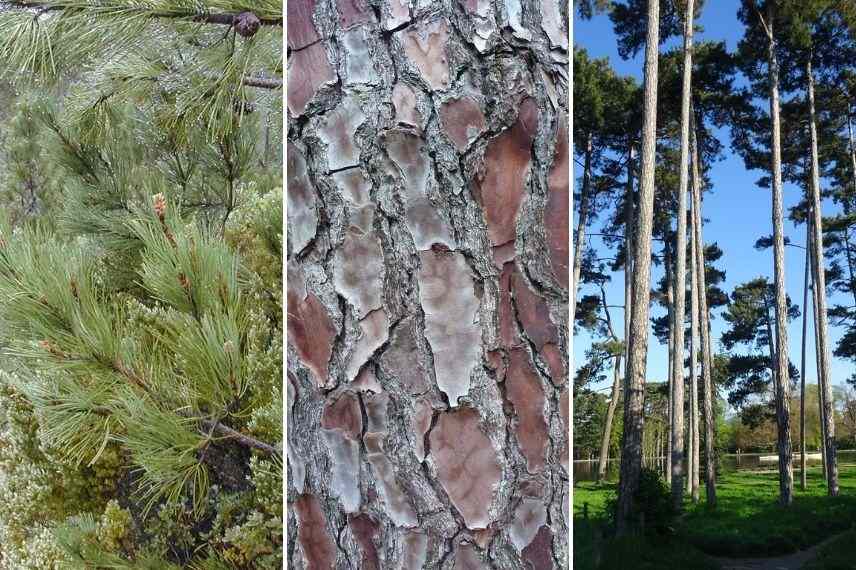
On the left, a close-up of the crown of the maritime pine. In the centre, a close-up of its beautiful reddish-brown bark
Hydrangea macrophylla ‘Ayesha’ is a hydrangea with flowers similar to lilacs. It is a large bush with a graceful habit that blooms abundantly in summer and again in autumn in mild climates.
Hydrangea heteromalla is a botanical species from the Himalayas. This hydrangea is robust, hardy, and low-maintenance. This large bush with dark green foliage turns red in autumn. Its white and pink flowering is generous in summer.
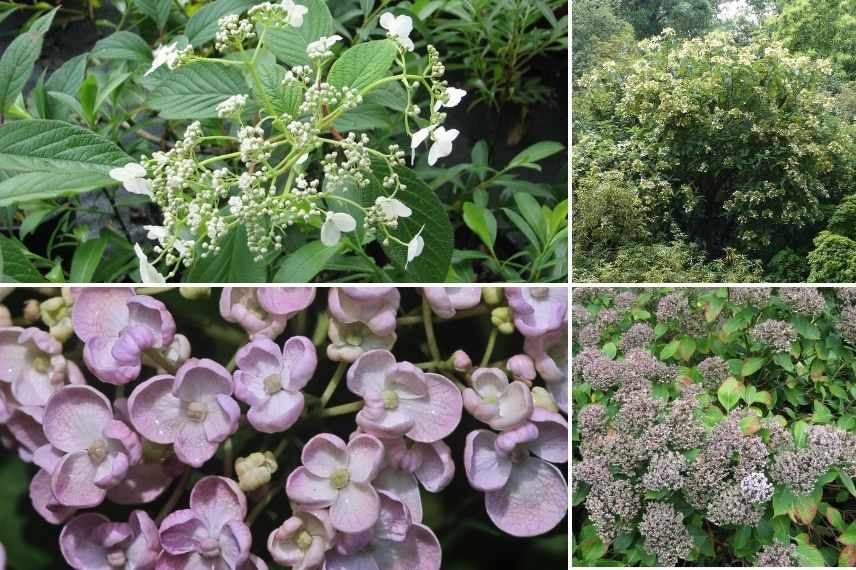
Hydrangea heteromalla above and below, Hydrangea macrophylla ‘Ayesha’
Scots pine 'Watereri' - Pinus sylvestris 'Watereri'
Scots Pine, Pinus sylvestris, is valued for its salmon-coloured bark and the beauty of its light foliage, a lovely grey-green. This pine is a light-loving species that is perfectly hardy, requiring little in terms of well-drained soil and is drought-resistant. Ideal for a large garden, it stands out when planted alone. It exudes a balsamic, resinous scent. It prefers ordinary soil, except for limestone.

Scots Pine adapts to all situations, filling them with its turpentine scent
The Pinus sylvestris ‘Watereri’ is a small pine ideal for small spaces. It is an easy plant to prune into a cloud shape.
The pine ‘Watereri’ is beautifully complemented by a carpet of colourful heathers. Erica x darleyensis ‘Kramer’s Rote’, valued for the vibrancy and duration of its flowering in a striking magenta to pink hue is a true winter adornment for the garden. Its dark green evergreen foliage takes on bronze tones in the cold. By combining different varieties with staggered flowering times, Darley heathers create a patchwork of colours for 6 to 7 months in the garden, even in slightly calcareous and dry soil.

Scots Pine ‘Watereri’ amidst heathers blooming all year round depending on the varieties
Discover other Conifers
View all →Available in 1 sizes
Available in 1 sizes
Available in 1 sizes
Available in 2 sizes
Available in 1 sizes
Available in 1 sizes
Available in 1 sizes
Available in 1 sizes
Available in 1 sizes
Available in 1 sizes
Chinese sequoia - Metasequoia glyptostroboides 'Chubby'
Metasequoia glyptostroboides ‘Chubby’ is a modest-sized deciduous conifer that is ideal for a small garden. It forms a regular pyramid shape, reaching 3.5 m in height and 2.5 m in spread. Its colour ranges from blue-green to chartreuse in summer, then takes on various shades of rust brown, old rose, and copper. This conifer prefers loose, loamy or sandy soils, not too calcareous. It develops its roots deeply in these conditions. This tree is well resistant to wind and tolerates humidity well.
 Like its cousin the Taxodium, the Metasequoia ‘Chubby’ will find its place in front of a water mirror.
Like its cousin the Taxodium, the Metasequoia ‘Chubby’ will find its place in front of a water mirror.
Pair it with humble, vigorous blooms like that of ‘Aster laevis. This giant offers an abundant and prolonged flowering in autumn, producing a cloud of blue-mauve stars above its dark foliage. An aster that thrives in full sun in any soil that is not too heavy, even if dry. Digitalis purpurea, or common foxglove, naturalises very easily, punctuating the garden with large pink, purple, or white leading shoots. Plant your foxgloves in dappled sunlight or partial shade, in humus-bearing, cool soil. Molinia arundinacea ‘Windsaule’ is a perennial ornamental grass with evergreen foliage whose silver spikes turn ochre-yellow to orange in autumn. It is a beautiful, airy giant whose aesthetic potential develops throughout the seasons.
 The large foxgloves self-seed, just like the Aster laevis, amidst the tall Molinia for a dreamy effect.
The large foxgloves self-seed, just like the Aster laevis, amidst the tall Molinia for a dreamy effect.
Read also
10 wind-resistant shrubsThuja plicata or Western red cedar - Thuja plicata 'Atrovirens' and 'Zebrina'
Thuja plicata ‘Atrovirens’ allows for the creation of large screens effective against the wind. It grows easily in any deep soil that is not too dry in summer. Its dark silhouette enhances any flower bed.
Thuja plicata ‘Zebrina’ stands out with its beautiful light green foliage striped with yellow, very bright in spring and summer. Its density makes it an ideal specimen for windy gardens. However, the ‘Zebrina’ variety has a much slower growth rate.
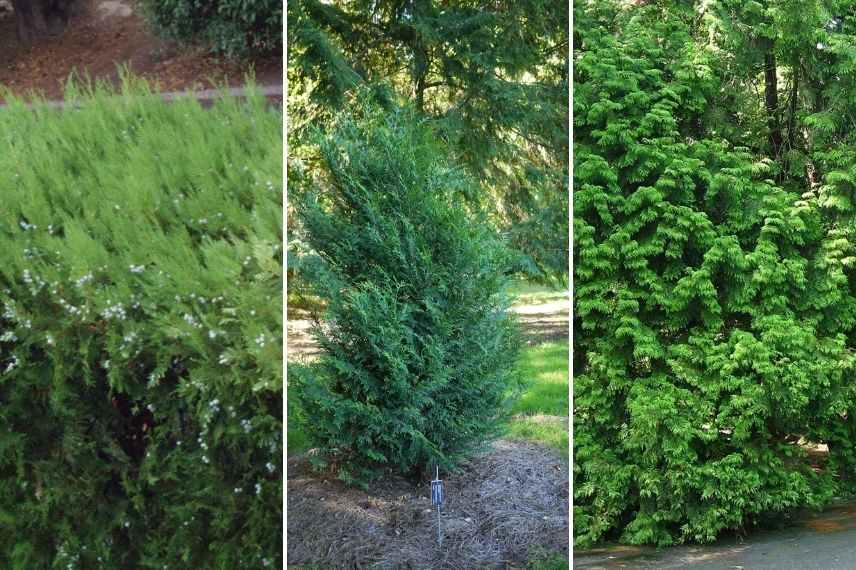
Commonly used in hedges, Thuja plicata is worth rediscovering as a specimen, especially the variegated cultivar ‘Zebrina’
Thuyas provide an ideal backdrop for showcasing the dove tree Davidia involucrata, a tree with stunning flowering, resembling small white handkerchiefs suspended. It blooms in May-June, and its flowers elegantly stand out from its variegated green foliage for the variety ‘Lady Sunshine’. The Cornus florida is a large, highly ornamental bush with a spreading habit and abundant spring flowering. Also known as the “Judah tree,” the Cercis siliquastrum is a must-have in small gardens. Its pinkish-purple flowers are spectacular, appearing in April-May on the naked wood. The flowers are fragrant.
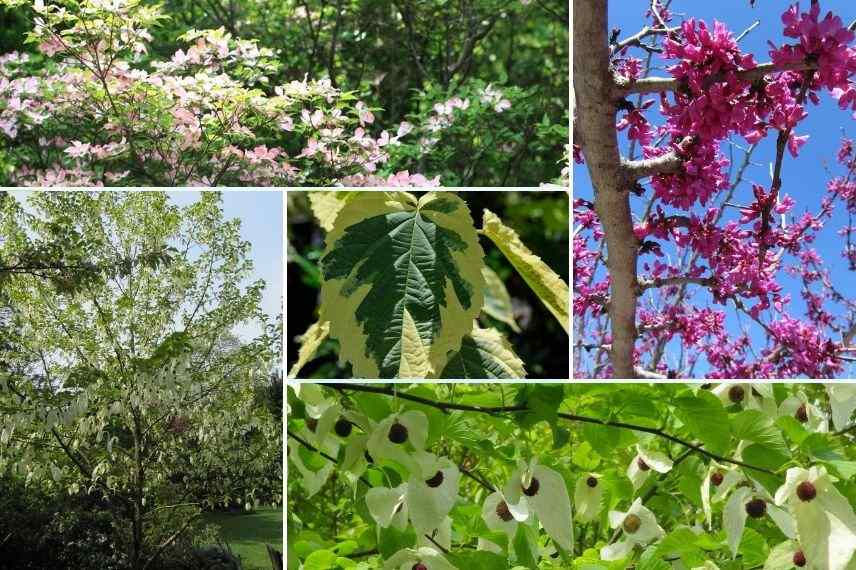
Above: Cornus florida, below: the dove tree, centre: the variegated Davidia, to the right: the Judah tree Cercis siliquastrum
Japanese larch - Larix kaempferi
The Japanese larch Larix kaempferi is a large deciduous conifer, with an elegant silhouette. It is adorned with bluish-green needles from spring to summer, then transforms into a stunning fiery hue in autumn. Very hardy, it prefers light, neutral to acidic soil that is always moist and a sunny exposure. This species is well-suited to our Atlantic regions: Brittany, Vendée, and Normandy.
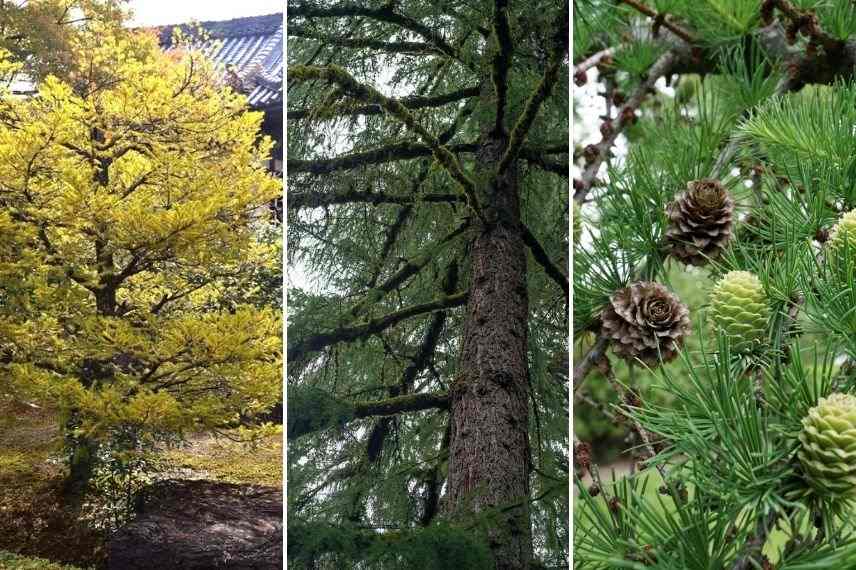
The Japanese Larch, an interesting deciduous conifer even in coastal plains
The light graphic nature of the larch foliage will be enhanced by the choice of equally delicate shrubs. The highly floriferous magnolias: Magnolia stellata in white and pink, and the remarkable cultivar Magnolia stellata ‘Waterlilly’ will be complemented at the base by the evergreen foliage of the osmanthus Osmanthus heterophyllus ‘Variegatus’, resembling that of holly.

The graceful Magnolia stellata ‘Rosa’, below: the extraordinary flowering of Magnolia stellata ‘Waterlilly’, above: the holly-like foliage of the variegated Osmanthus
The Swiss pine - Pinus cembra 'Compacta Glauca'
The Pinus cembra ‘Compacta Glauca’ or Cembro pine has its place in a medium-sized garden as a specimen plant or at the back of a border. This variety of conifer is distinguished by its small size. Its very compact habit and magnificent dense foliage are its two assets against the wind.
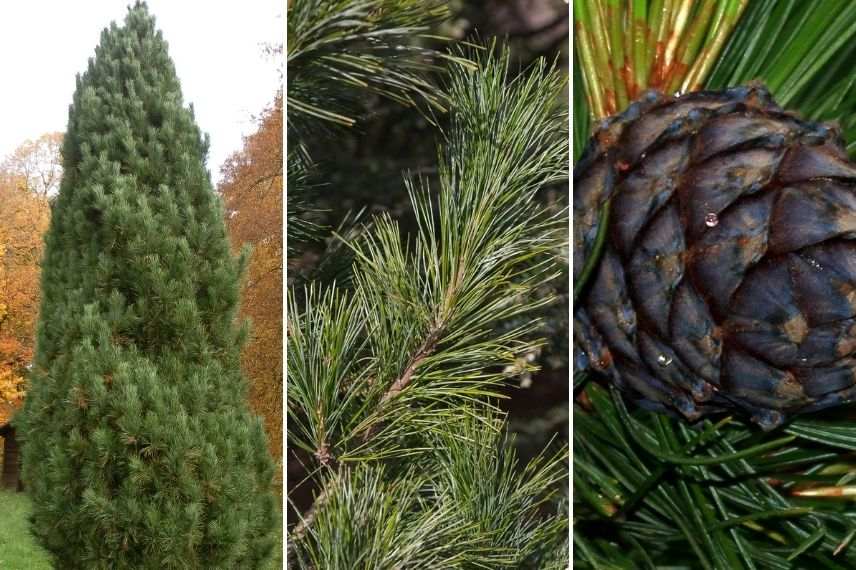 The Cembro Pine is a very elegant conifer that withstands the wind. Its large blue-tinged cones delight squirrels.
The Cembro Pine is a very elegant conifer that withstands the wind. Its large blue-tinged cones delight squirrels.
Pyrus calleryana ‘Chanticleer’ is a very hardy ornamental pear tree that tolerates sea spray and urban pollution. This small tree turns a fiery red in autumn. The clergy’s tree or Clerodendron trichotomum in Latin is a small tree with a spreading habit. This bush bears small white or pale mauve flowers with a purplish calyx. Their fragrance is reminiscent of jasmine. The flowers give way to dark blue berries with metallic reflections.
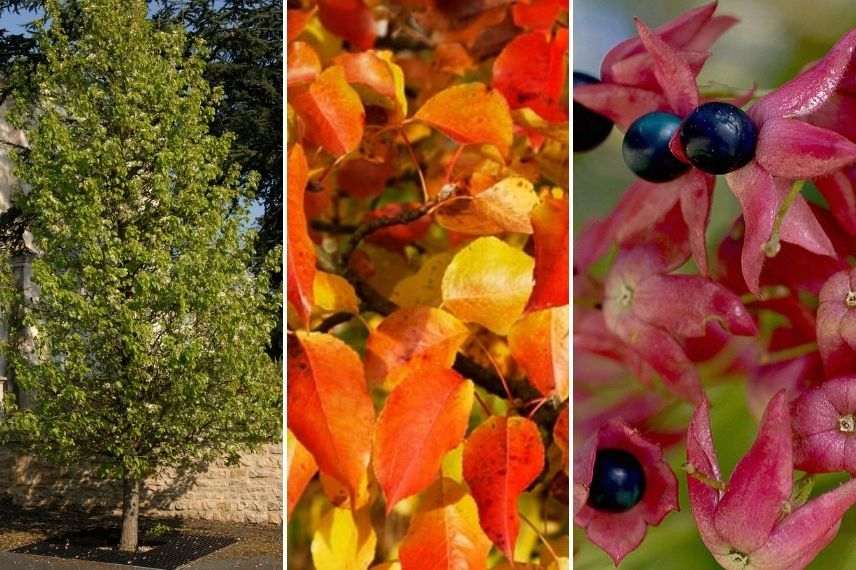 On the left: Pyrus calleryana ‘Chanticleer’. In the centre, its autumn foliage. On the right: the Clerodendron enchants the garden with its bronze and gold colours and delicate fragrance.
On the left: Pyrus calleryana ‘Chanticleer’. In the centre, its autumn foliage. On the right: the Clerodendron enchants the garden with its bronze and gold colours and delicate fragrance.
Lambert's cypress - Cupressus macrocarpa
Cupressus macrocarpa or Monterey cypress is ideal for a very windy seaside garden, in sandy soil, where few trees thrive. It has a taproot system that allows it to anchor very deeply into the soil to withstand wind, even strong gusts. Its hardiness is around -15 °C in well-drained soil.
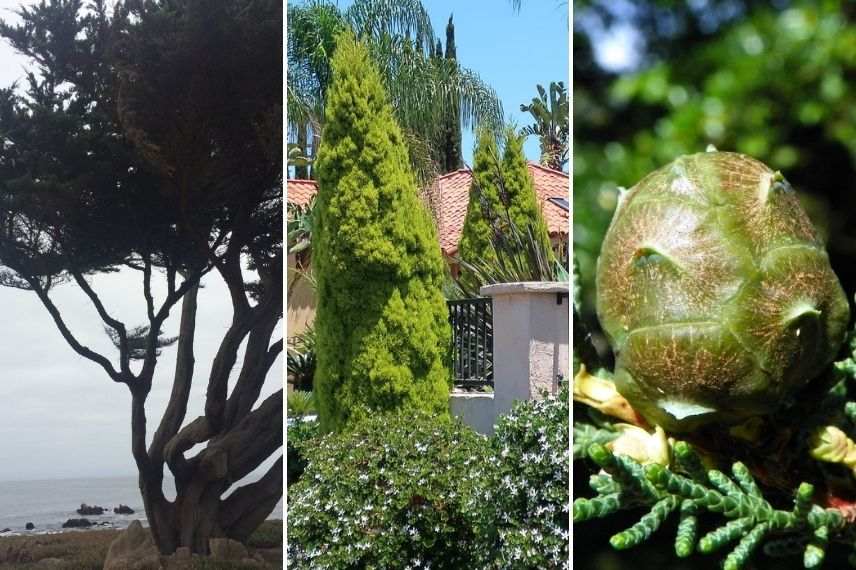
The Monterey cypress Cupressus macrocarpa in its natural environment is sculpted by the wind, while young, it forms a perfect and fragrant cone.
This lovely conifer takes on a beautiful golden yellow colour in sunny situations. The Picea pungens ‘Blue Diamond’ has blue foliage that contrasts against a colourful, evergreen carpet of Coprosma repens ‘Evening Glow’. The Yucca filamentosa and Furcraea bedinghausii give this rockery a very Californian look by the sea. Elsewhere, opt for Australian cordylines or dogwoods for the beauty of their bark.
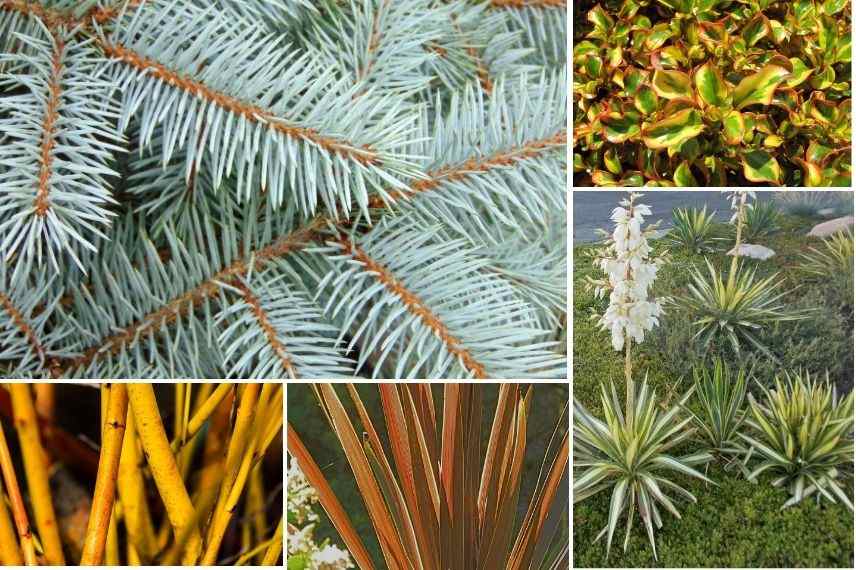
The Blue Spruce joins the Yucca filamentosa, dogwoods, and cordylines on a carpet of Coprosma.
Monkey puzzle tree - Araucaria araucana
The monkey puzzle Araucaria araucana is an original and graphic tree. It gets its common name from an English lord who, upon seeing its very sharp leaves, reportedly declared: “It would pose quite a problem for a monkey to climb this tree!”. Place it near ferns Dryopteris affinis and ostrich ferns Matteucia pensylvanica. Large flowering clusters of rhododendrons and Japanese dogwoods mixed, such as Cornus controversa variegata, will complete this scene.

The Araucaria araucana or monkey puzzle seems accessible to any garden. However, it quickly becomes a giant.

Japanese atmosphere and refined graphics of large ferns amidst the generous flowering of rhododendrons and dogwoods.
Bald cypress - Taxodium distichum
Taxodium distichum, bald cypress or Louisiana cypress, is a large deciduous and hardy conifer. It adorns itself with magnificent rusty red hues in autumn, then golden brown. It thrives in ordinary, deep, and cool soil, with a sunny exposure. In our climates, it will not exceed 20 to 25 m in height and 7 to 8 m in spread. Its growth is quite rapid and it can live up to 500 years.
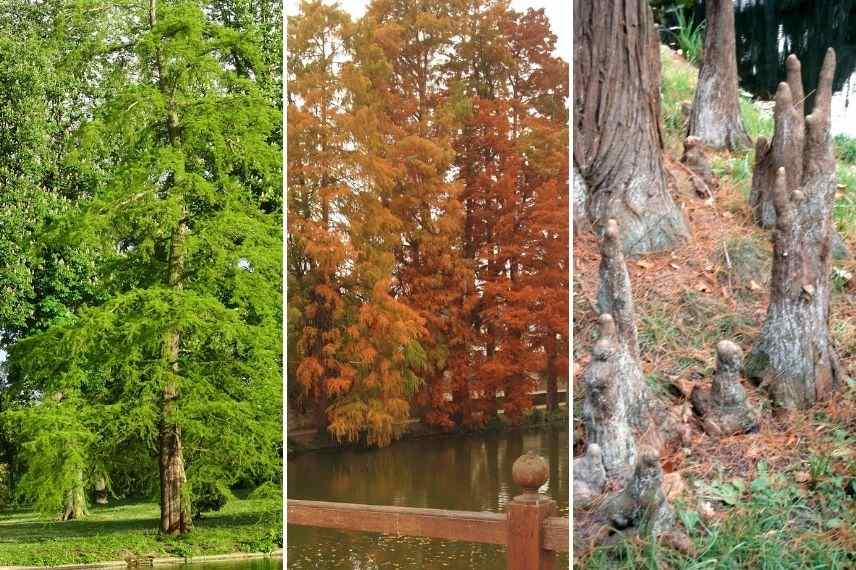 The majestic bald cypress Taxodium distichum is as beautiful in spring as it is in autumn. It adapts to any cool or moist soil in a large garden thanks to its respiratory roots.
The majestic bald cypress Taxodium distichum is as beautiful in spring as it is in autumn. It adapts to any cool or moist soil in a large garden thanks to its respiratory roots.
You can pair it with another giant deciduous conifer, the Metasequoia glyptostroboides, which you can accompany with a rustic and fragrant grove of Hamamelis.
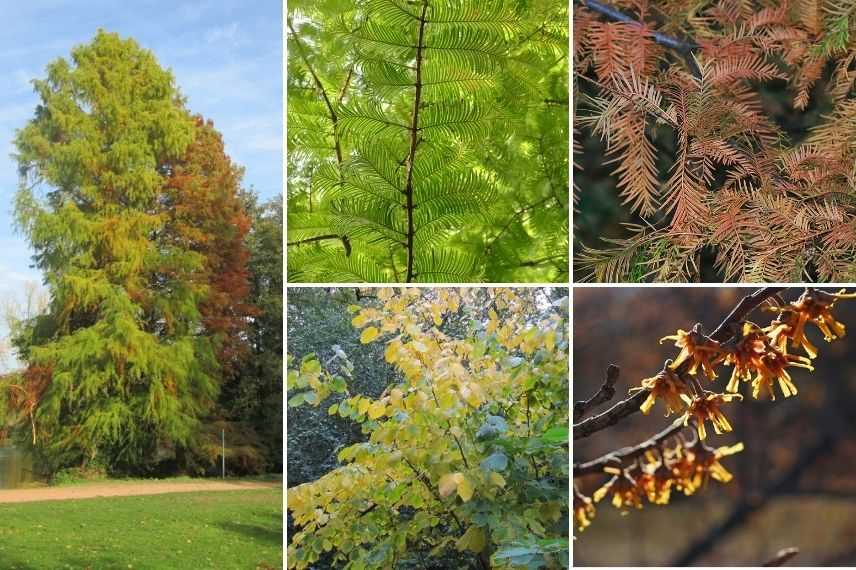 On the left, the elegance of Metasequoia glyptostroboides by the water. On the right, Hamamelis vernalis also celebrates the seasons.
On the left, the elegance of Metasequoia glyptostroboides by the water. On the right, Hamamelis vernalis also celebrates the seasons.
- Subscribe!
- Contents
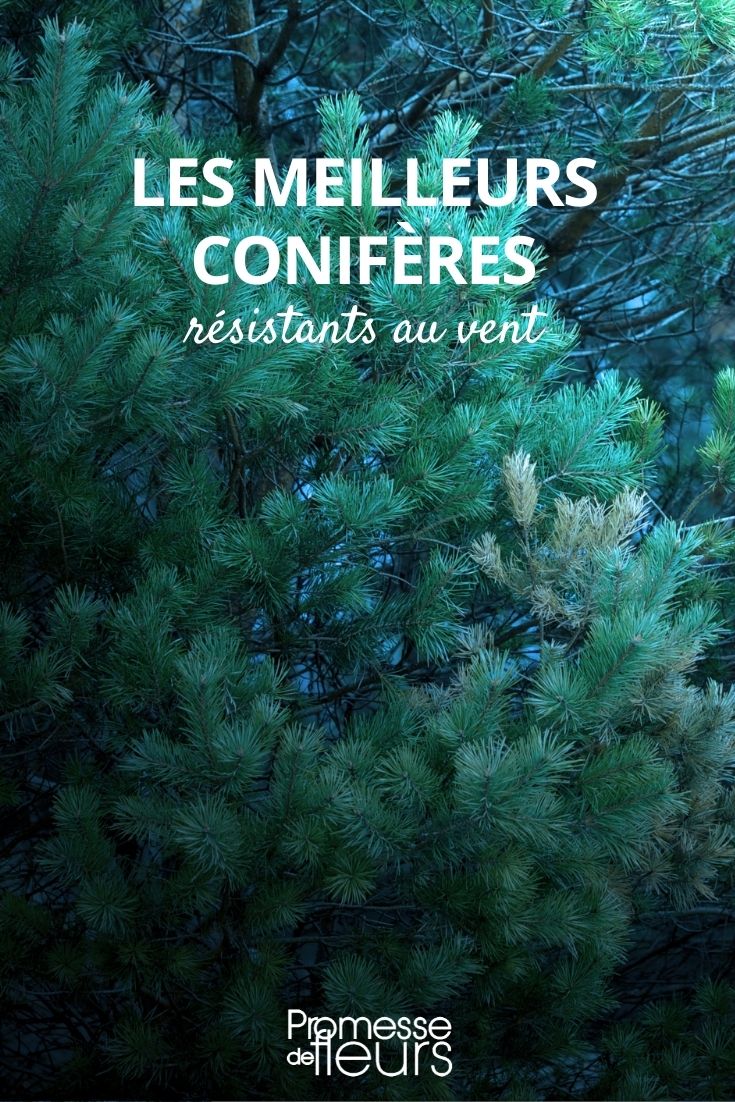
































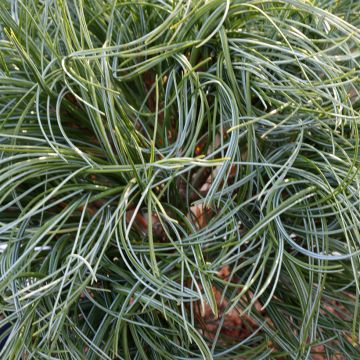
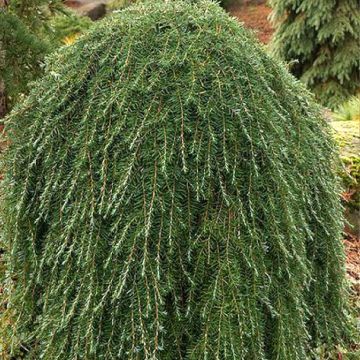


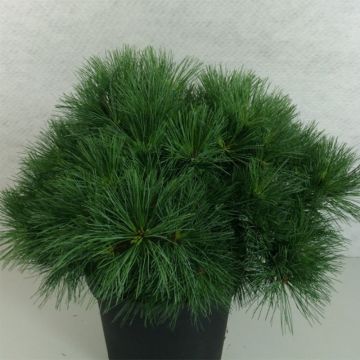

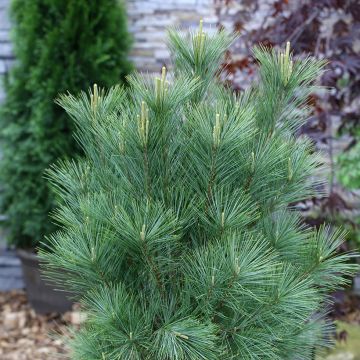

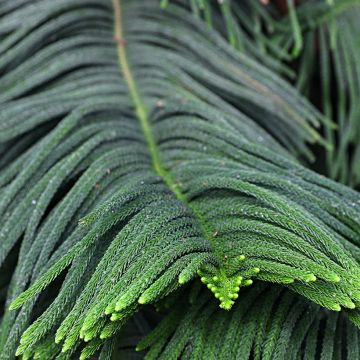
Comments